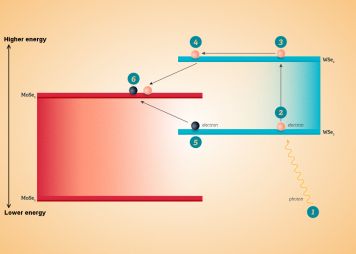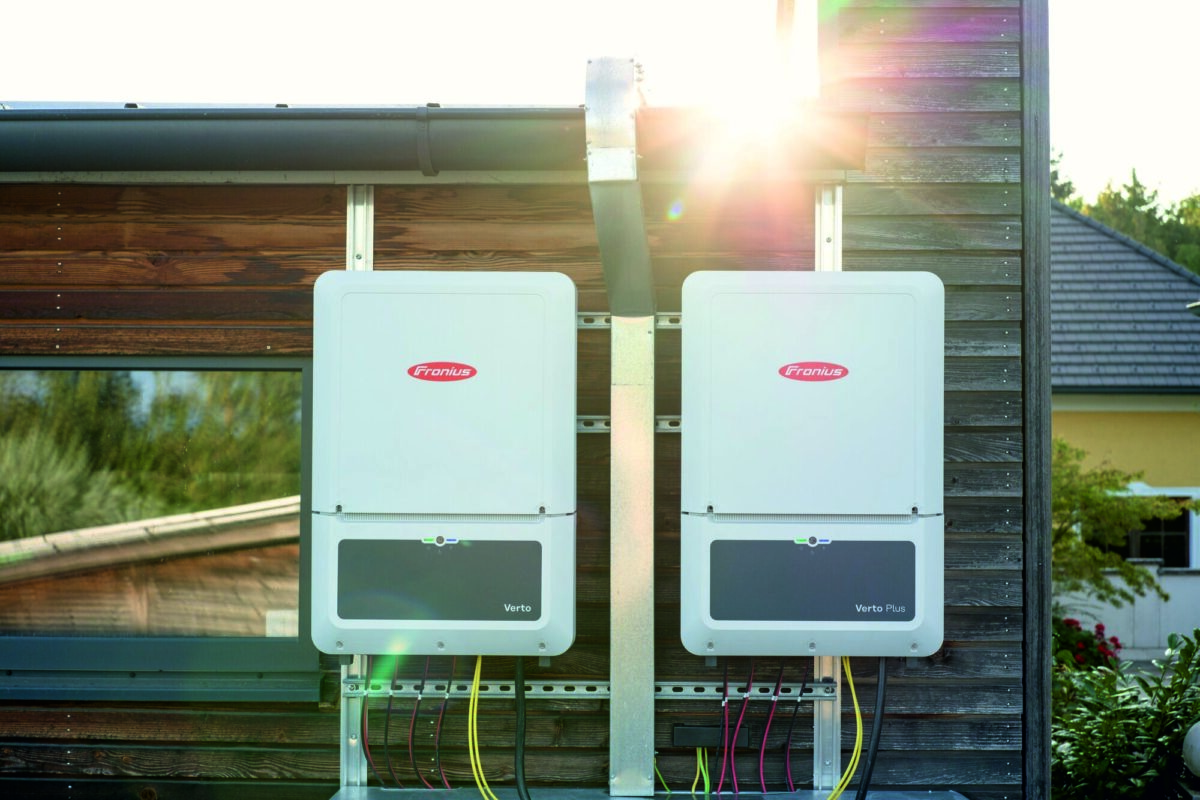Physicists at the University of California, Riverside, have developed a new prototype of solar module, in which photons can generate two electrons or more through a process called electron multiplication. This compares, the researchers said, to existing solar panels , in which one photon can at most generate one electron.
In their labs, the researchers stacked two atomic layers of tungsten diselenide on a single atomic layer of molybdenum diselenide (MoSe2). This resulted in different properties than those of the parent layers, meaning that customized electronic engineering at the tiniest possible scale can be achieved. What the physicists realized was that when a photon strikes the WSe2 layer, an electron is knocked loose, making it free to conduct through the WSe2. At the junction between WSe2 and MoSe2 the electron drops down into MoSe2.
“Normally, when an electron jumps between energy states, it wastes energy. In our experiment, the waste energy instead creates another electron, doubling its efficiency. Understanding such processes, together with improved designs that push beyond the theoretical efficiency limits, will have a broad significance with regard to designing new ultra-efficient photovoltaic devices,” said Nathaniel M. Gabor, an assistant professor of physics, who led the research team.
In conventional photocell devices, electron multiplication usually requires applied volatages of 10-100 volts. However, the UC researchers only used 1.2 volts (typical voltage supply of AA battery) to observe the doubling of electrons. “Such low voltage operation, and therefore low power consumption, may herald a revolutionary direction in photodetector and solar cell material design,” said Max Grossnickle, another graduate student in Gabor’s lab and the research paper’s co-first author.
“We saw a doubling of electrons in our device at 340 degrees Kelvin (150 F), which is slightly above room temperature,” she said. “Few materials show this phenomenon around room temperature. As we increase this temperature, we should see more than a doubling of electrons.”
The research team also explained that the quantum mechanical phenomenon his team observed in their device is similar to what occurs when cosmic rays, coming into contact with the Earth’s atmosphere with high kinetic energy, produce an array of new particles.
This content is protected by copyright and may not be reused. If you want to cooperate with us and would like to reuse some of our content, please contact: editors@pv-magazine.com.



By submitting this form you agree to pv magazine using your data for the purposes of publishing your comment.
Your personal data will only be disclosed or otherwise transmitted to third parties for the purposes of spam filtering or if this is necessary for technical maintenance of the website. Any other transfer to third parties will not take place unless this is justified on the basis of applicable data protection regulations or if pv magazine is legally obliged to do so.
You may revoke this consent at any time with effect for the future, in which case your personal data will be deleted immediately. Otherwise, your data will be deleted if pv magazine has processed your request or the purpose of data storage is fulfilled.
Further information on data privacy can be found in our Data Protection Policy.